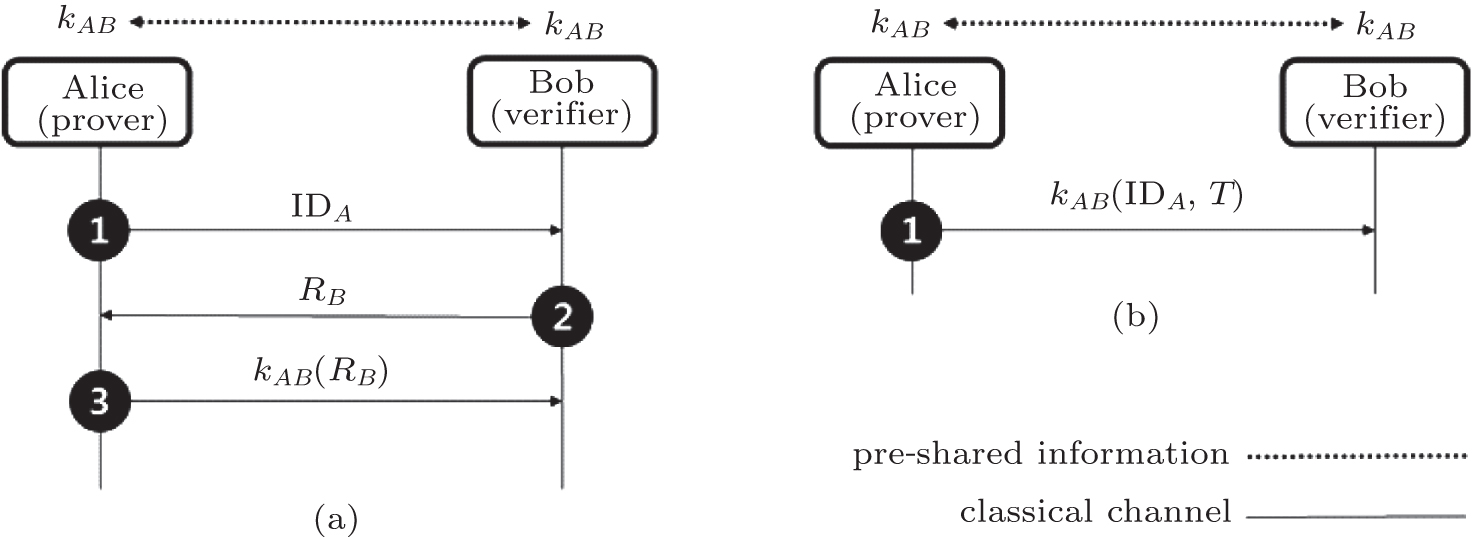Controlled mutual quantum entity authentication using entanglement swapping

Controlled mutual quantum entity authentication using entanglement swapping |
| Challenge-response authentication using a symmetric-key cipher.[ 1 – 4 ] In phase 1 in panel (a), prover Alice transmits her identification ID A to verifier Bob to request entity authentication. In challenge phase 2 of panel (a) Bob sends a nonce (random number) R B to Alice. In response phase 3 of panel (a), Alice demonstrates that she is sharing the secret key, k AB , with Bob by transmitting to Bob the encrypted random number, k AB ( R B ). The nonce, R B , is renewed in each session. In panel (b), Alice shows that she is also sharing the secret key, k AB , with Bob. Unlike Bob, Alice completes the entity authentication by transmitting only once the encrypted number, k AB (ID A , T ), of her identification ID A and timestamp T using the secret key, k AB . If timestamp T is not agreed upon in advance, Bob rejects Alice’s authentication. |
 |